[Picture story] How Chinese food made its way all over the world
Chinese cuisine is far from the sweet and sour pork or fortune cookies found in the Chinatowns of the West. From the familiar flavours of Cantonese cuisine to the spicy notes in Sichuan fare and the clean flavours of Jiangsu cuisine, every taste has a place in the rich tapestry of China's food heritage. Historical photo collector Hsu Chung-mao traces how the Chinese and their food - complete with an entire culture - travelled in history beyond Asia into the wider world.

(All photographs courtesy of Hsu Chung-mao unless otherwise stated, Chinese ink paintings by Tania Hsu.*)
Over its long history, China's food culture has been passed down through the ages. Its main beverage is tea, with tea leaves a major export item. Trading teams from Central Asia traversed thousands of miles on camels through vast deserts and grasslands to come to China for its porcelain, silk, and tea. Chinese food is also well-known all over the world, but apart from the classic image of chopsticks, most foreigners know nothing about Chinese cuisine beyond the dishes offered at their local Chinatown, which are adapted to foreign taste buds.
China is huge, with cuisine unique to each province. Nevertheless, put all this food beside one another, and one would still find a few standout dishes. Imagine putting together a state dinner, or a lavish wedding dinner, with ten to fifteen guests at each table. Each dish presented would have to look, smell, and taste perfect, and in ample portions - what Chinese call "main courses" (大菜).
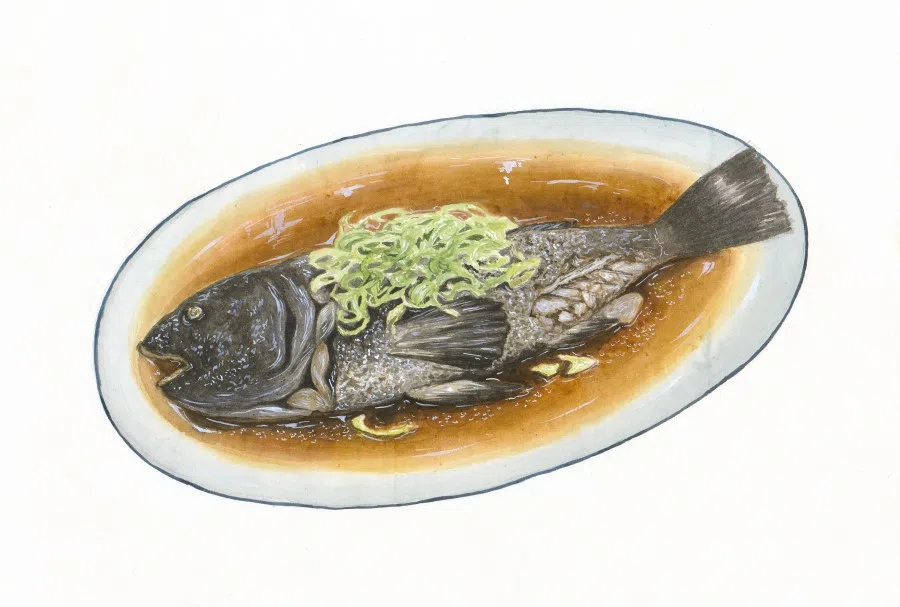
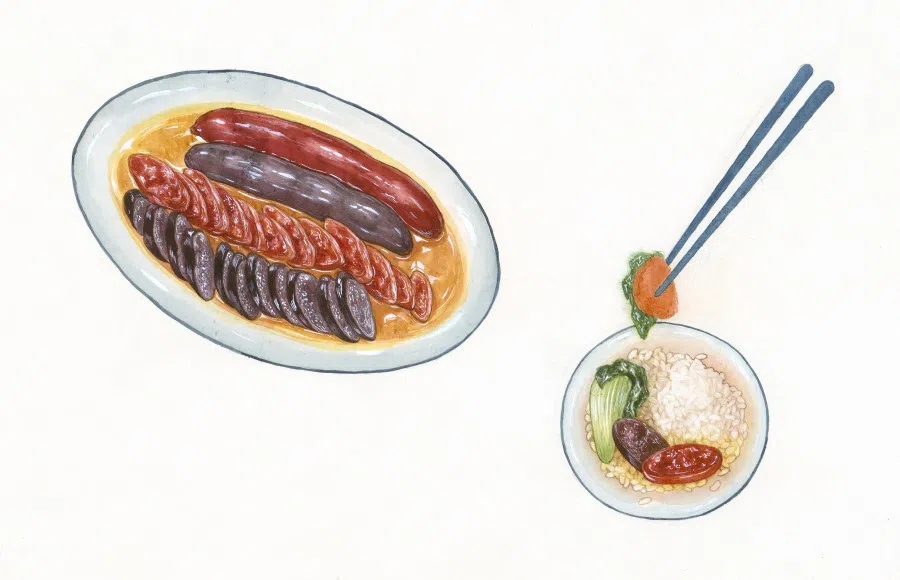
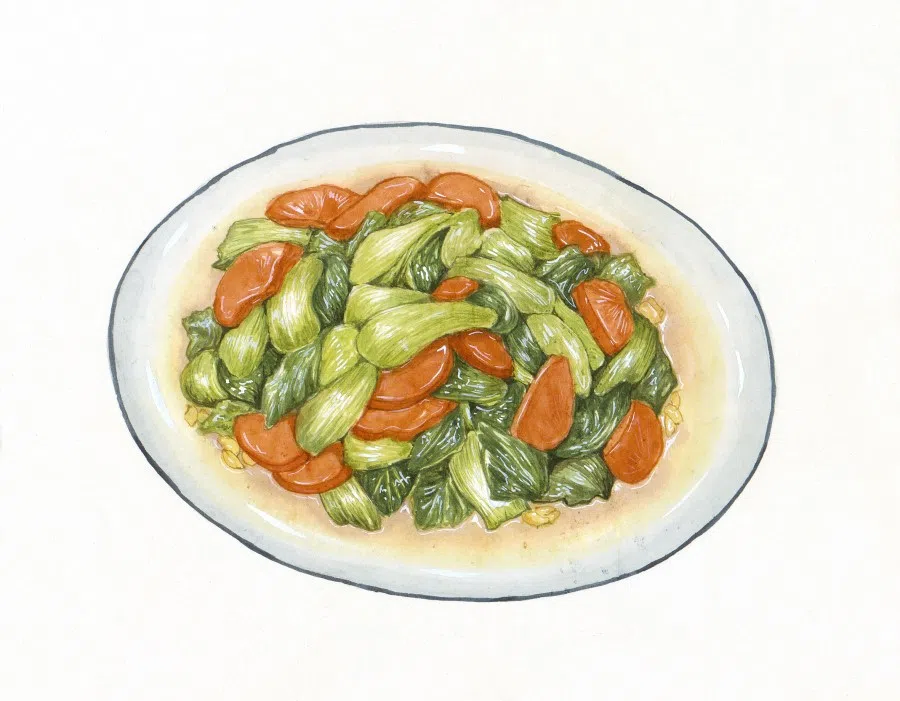


Generally, China's main courses consist of dishes from Guangdong and Sichuan, which are more richly flavoured. Sichuan cuisine is mostly about mala, and lots of chilli. One joke goes that children in Sichuan munch on chilli like it's chewing gum; yes, they love their chilli there!
Guangdong or Cantonese cuisine is a blend of sour, savoury, and sweet. The flavours are rich and the ingredients varied, and it is possible to come up with large plates of tasty dishes in generous portions, which is why they are found as part of large-scale functions. By contrast, Jiangsu and Zhejiang cuisine is lighter, with many types of cold dishes and side dishes, and rice as the staple.
Guangdong and Fujian are the main tea-producing provinces in China, and a source of the world's tea. The word 茶 (tea) is pronounced "cha" in Cantonese and "te" in Hokkien, and without exception, the word for tea in any language comes from one or the other of these.
In northern China, the main type of cuisine comes from Beijing, of which the best-known dish is Peking duck. Given the harsh winters there, people eat a lot of high-calorie or "heaty" food like grilled lamb and lamb hotpot, paired with strong alcohol and complemented with grain-based items such as noodles and buns, baked pastries (烧饼) and dumplings, which form the basis of northern Chinese cuisine. As for the border regions, Mongolia and Xinjiang have preserved the nomadic diet and flavours of the past, such as lamb kebabs and goat's milk, and plenty of spices. Yunnan cuisine is similar to the food in Thailand and Myanmar, while Guangxi's dishes are close to Vietnamese cuisine.


But even as various cuisines have their unique points and various fans, if one had to rank them, Cantonese cuisine would probably be the most popular and influential. One reason is that the Cantonese migrated all over the world, indirectly driving the globalisation of Cantonese cuisine. Second, Cantonese cuisine is not just about good food; it is a complete lifestyle, a culture of leisure and enjoyment of good food, as exemplified by the yum cha culture (饮茶, literally "drink tea").
Guangdong and Fujian are the main tea-producing provinces in China, and a source of the world's tea. The word 茶 (tea) is pronounced "cha" in Cantonese and "te" in Hokkien, and without exception, the word for tea in any language comes from one or the other of these.
The yum cha culture
The Cantonese love drinking tea, and enjoying a hearty breakfast - complete with tea - is known as 早茶 (zou cha, literally "early/morning tea") or 饮茶 (yum cha). Cantonese-style eateries offering yum cha/zou cha are found throughout China, and are popular with local Chinese everywhere. The first question that servers ask is usually what tea the customer would like - the main choices are oolong, jasmine, pu-erh, or chrysanthemum. Then the servers move around between tables with push carts full of dim sum (点心, literally "dot the heart", meaning small Cantonese dishes much like the Spanish tapas) and customers pick what they want.
Common dim sum dishes include siew mai (steamed pork wrapped in dumpling skin), har gow (steamed prawn dumplings), cheong fun (steamed rice rolls), steamed chicken feet, braised pork ribs, and radish cake (steamed or deep fried pieces of shredded radish with flour). Cantonese lifestyle culture is strong in China, and yum cha is a representative part of that culture.

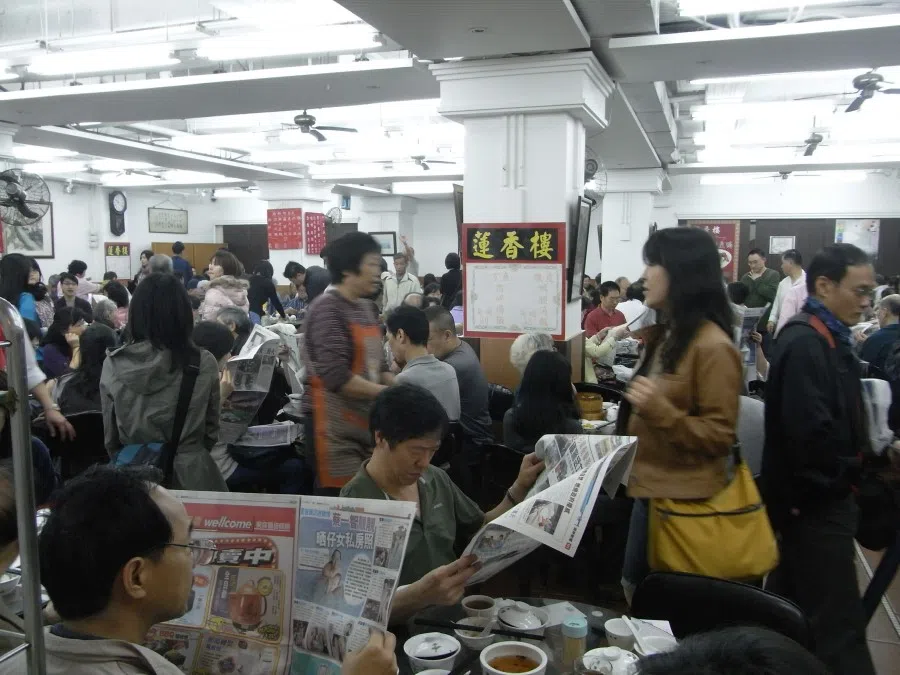
In the second half of the 19th century, Cantonese coolies (manual labourers) crossed the Pacific Ocean to North America to build the railways or to join the gold rush. After which, many of them flocked to big cities on the eastern and western coasts and took on low-level jobs to make ends meet, setting up small businesses such as laundry shops and Chinese restaurants. Laundry shops were low-cost - a washboard, soap, and iron, plus a small shop space was all that was needed. The hardworking Chinese would work around the clock, exercising thrift to save money for a home, or for the education of the next generation as the most effective way to change the destiny of the family.
Opening eateries in new lands as a means of livelihood
Restaurants called for kitchens, furnishings and simple decor, and the cost was higher, but the early Chinese migrants ran small and simple eateries. Many Chinese male migrants had no family with them and had to prepare their own meals, and some became good cooks, so setting up a restaurant to serve food from their hometowns became an obvious option.
As most early Chinese migrants to Europe and the US were Cantonese, Chinese restaurants offering Cantonese food flourished, serving affordable dishes such as roast duck and goose, soy sauce chicken, wonton noodles, Cantonese-style fried noodles, Cantonese-style wui fan/mui fan (烩饭, rice with gravy/sauce), and fried hor fun (flat rice noodles). Also, to cater to Western taste buds, Cantonese food overseas did not taste as rich; for example, tomato ketchup is used to create the flavours of sweet and sour pork. As for chop suey and fortune cookies, these were created by overseas Chinese, and are not found in China.
After communist China was established in 1949, traditional time-honoured restaurants gradually became state-owned, and many well-known dishes lost their original nuanced flavours. And with that, the restaurateurs who went to Hong Kong and Taiwan ended up inheriting the authentic tastes.



If most of the Chinese restaurants that opened overseas before World War II were just amateurs, the high-end Chinese restaurants opened after WWII by successful restaurateurs from Hong Kong and Taiwan who later migrated to Europe and the US were like major-league football cup finalists.
After communist China was established in 1949, traditional time-honoured restaurants gradually became state-owned, and many well-known dishes lost their original nuanced flavours. And with that, the restaurateurs who went to Hong Kong and Taiwan ended up inheriting the authentic tastes. In particular, when economic growth peaked in the 1970s, these restaurateurs started upgrading their restaurants or setting up high-end ones, creating a revolution in Chinese food and lifestyle enjoyment.
Cantonese cuisine goes international
Guangdong is located near the sea. Its largest river, the Pearl River, experiences ample flow and is rich with marine life. Hence, it is not surprising that seafood is a key feature of Cantonese cuisine. Cantonese soups, with its fanciful varieties featuring rich ingredients, including a huge array of dried seafood and Chinese herbs, also features largely in the cuisine of the Cantonese. Not only that, the best dishes from other provinces are often included in the menu of these restaurants, such as kung pow chicken from Sichuan and General Tso's chicken from Hunan.
When these restaurateurs brought their high standards to Europe and the US, they created a new brand of high-end Chinese restaurants. These establishments had top chefs, adopted Western-style implements, hygiene standards, and management styles, and presented delicious and refined cuisines in a comfortable and chic environment.
At the other end of the spectrum, there were the Chinese takeout joints which sprouted all over the West, in line with the Western penchant for fast food.




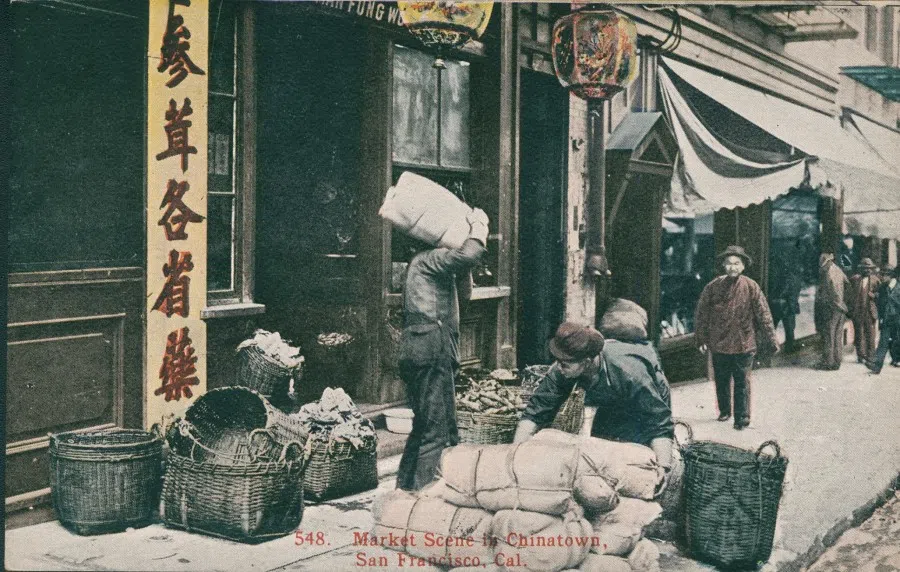


Within Asia, the Japanese have assimilated Chinese food as part of Japanese cuisine, most prominently in the form of gyoza (饺子, dumplings) and mapo tofu (麻婆豆腐, spicy tofu). However, the flavours tend to be a little muted. As for Taiwan, people from all parts of mainland China migrated there in 1949, which means one can find - and taste - cuisine from practically all over China. But because most migrants to Taiwan came from Fujian, Hokkien-style street snacks such as rice dumplings, fried oyster omelette, fried bee hoon (thin rice noodles), pork blood cubes in soup, and meatballs are popular. Of course, there is also fermented or stinky tofu, famous for being "smelly but tasty".

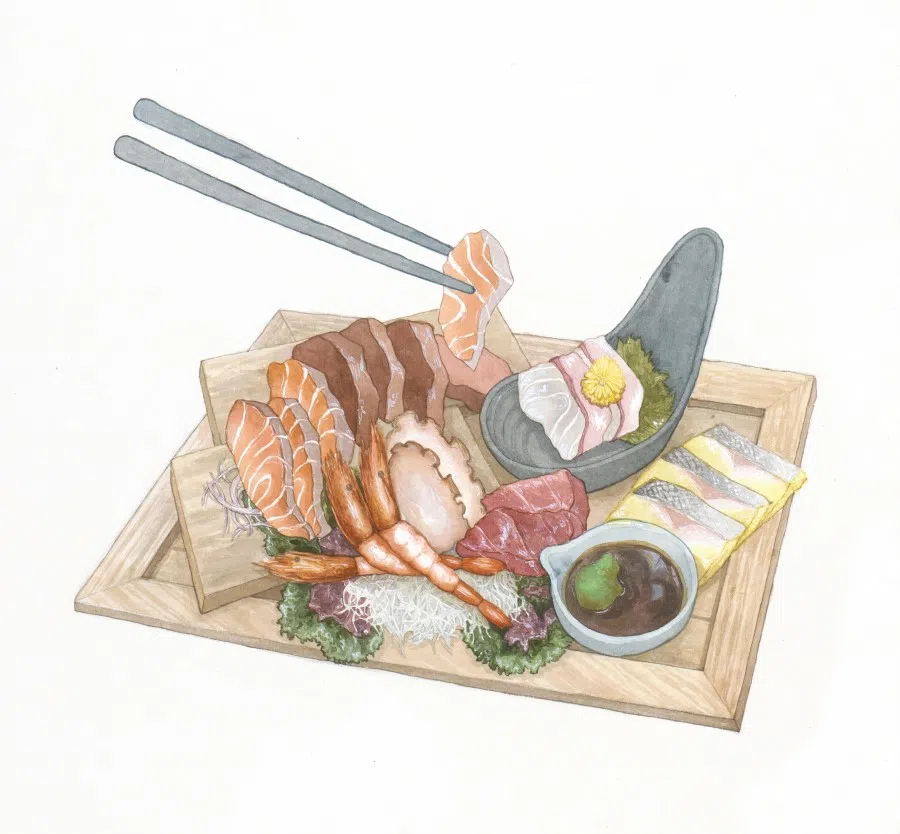

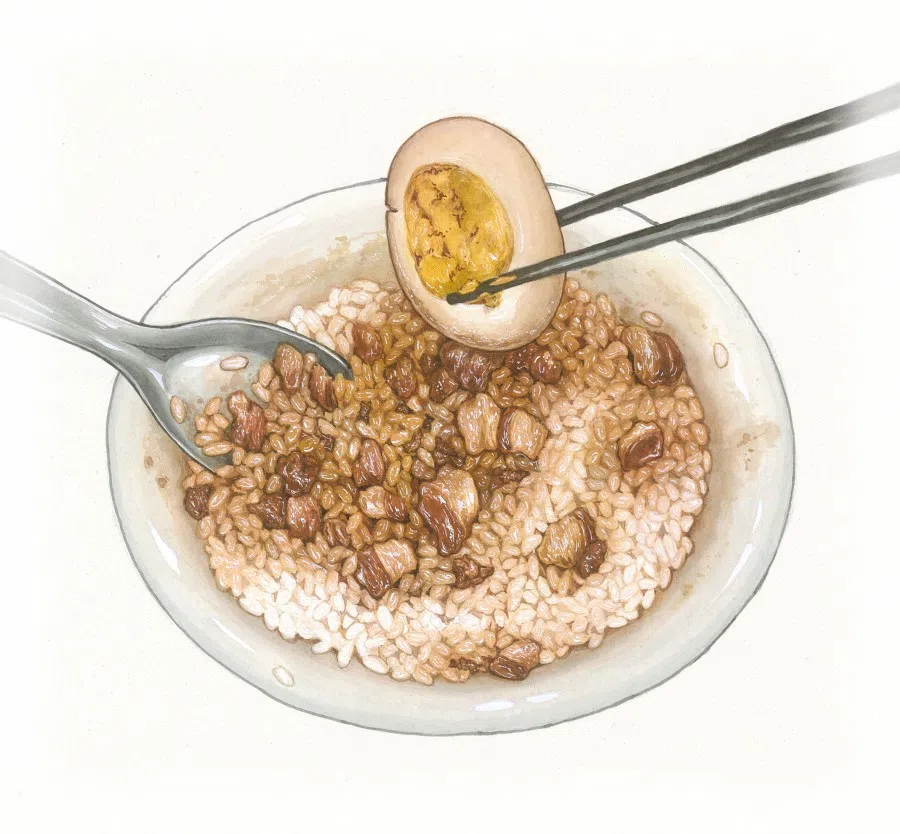
Most Chinese in Southeast Asia are migrants from Fujian and Guangdong, and they too developed their own everyday dishes, like Hokkien-style prawn noodles, Hainanese chicken rice, and bak kut teh (肉骨茶, pork ribs soup). As eateries in Singapore and Malaysia expanded operations, these Southeast Asian Chinese dishes have made their way back to Taiwan, Hong Kong, and mainland China, gradually finding a place on the mainstream menu.
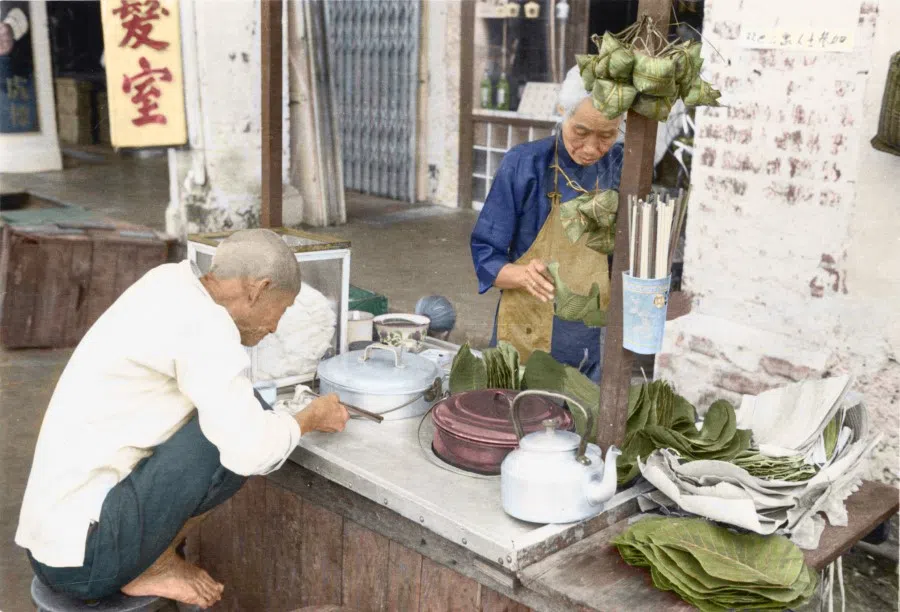




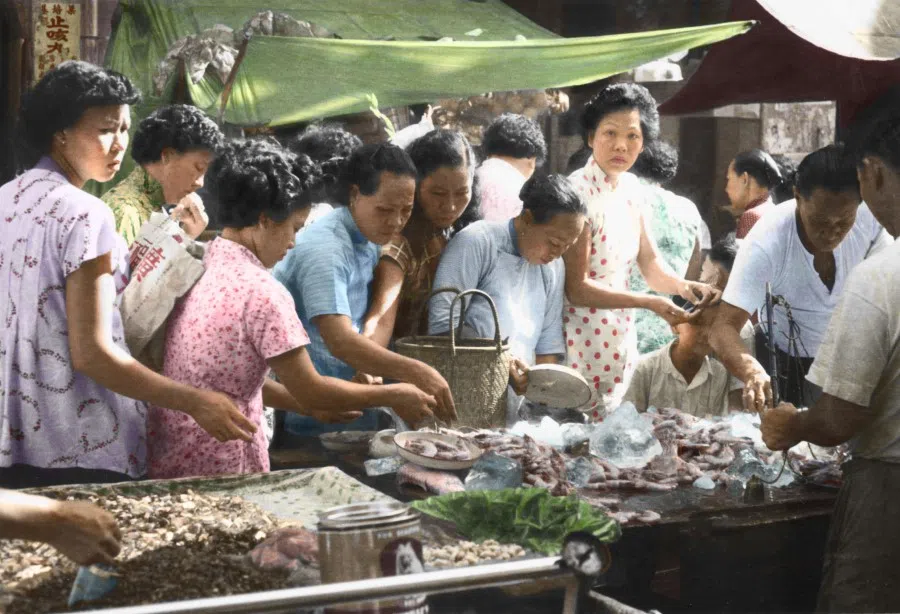


*The food illustrations in this article are Chinese ink paintings by Taiwanese young artist Tania Hsu. She graduated from the Department of Calligraphy and Painting Arts at Chang Jung Christian University and specialises in painting still lifes of international cuisine using traditional Chinese painting techniques.
Related: The power of food memories in shaping who we are | Beijing's instant-boiled mutton and sweet memories of childhood days in Taiwan | From New York to Suzhou: A professor's guide to eating hairy crabs | Remembering a mother's beautiful smile and Suzhou's 'Sixth Moon yellow' crabs | Art and history in a bowl of Suzhou noodles | No more sharing of communal dishes: A revolution of Chinese dining habits? | The simple beauty of Taiwan in a heavenly scallion pancake with chive sauce





